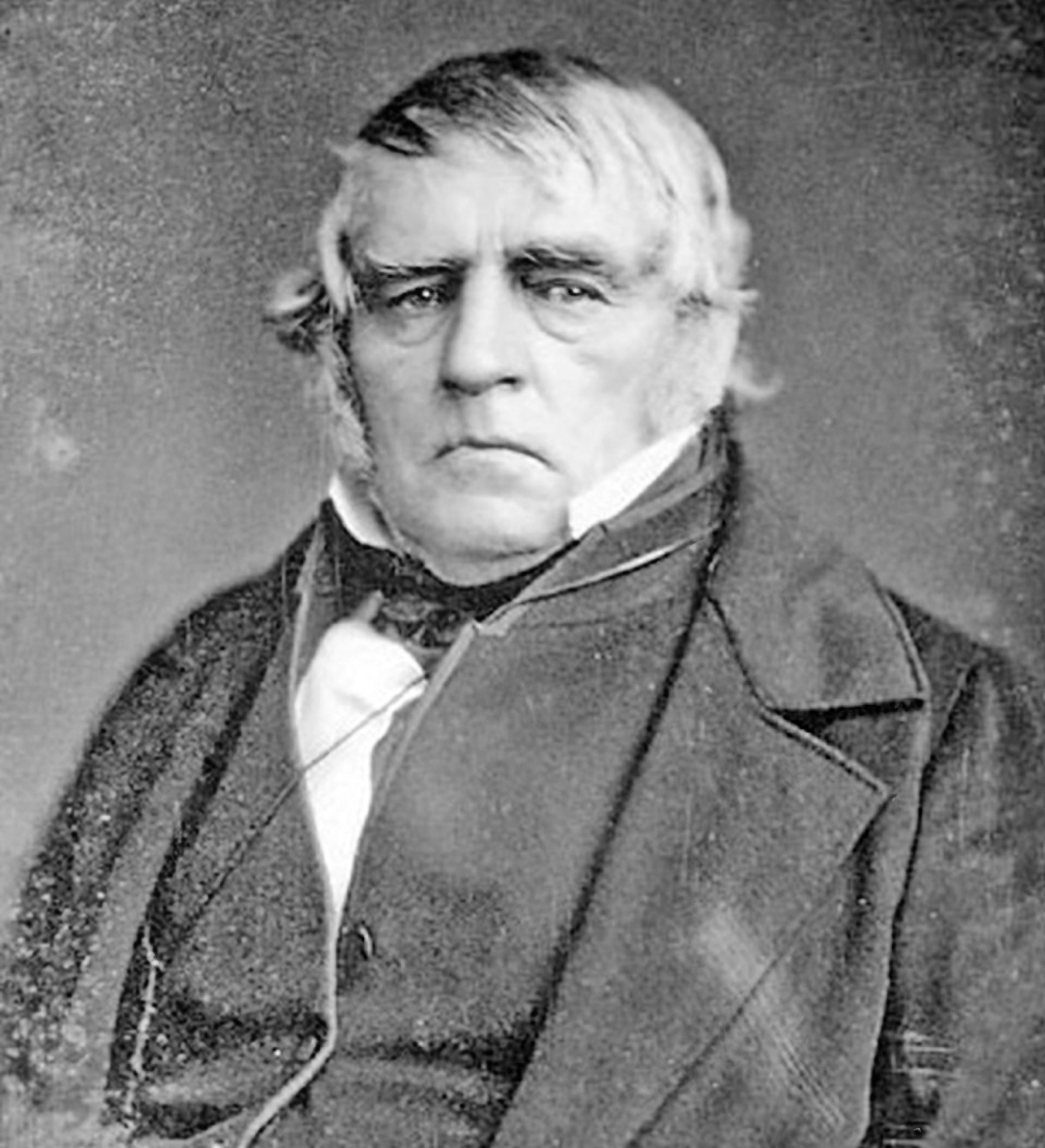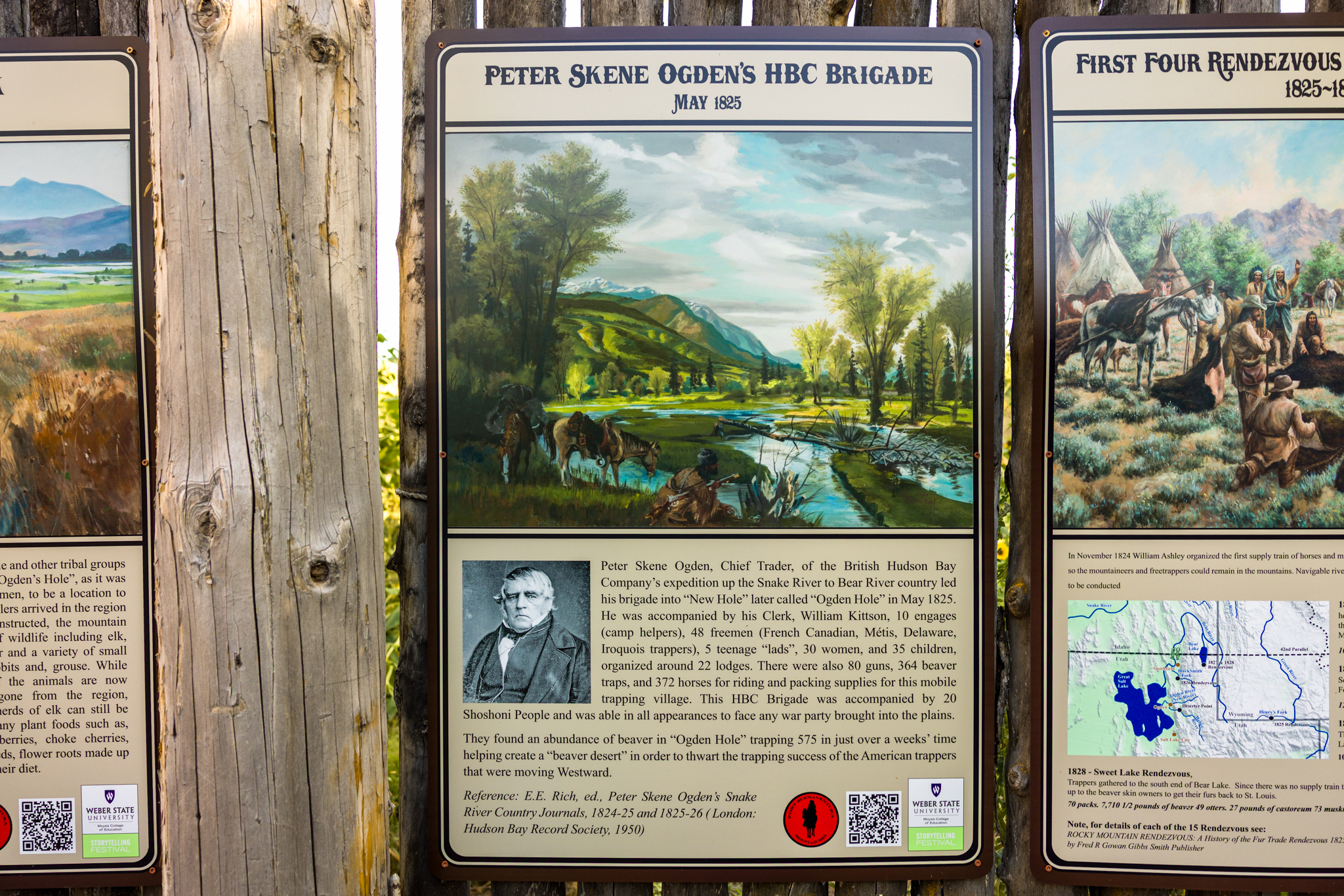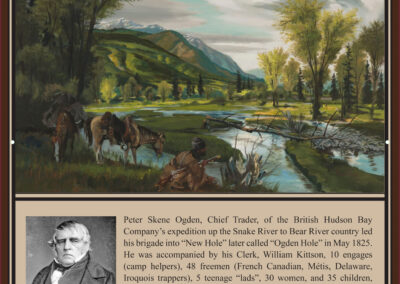HISTORIC MARKER
Fort Buenaventura
41° 12′ 53.3″ N • 111° 59′ 23.8″ W
In the spring of 1825, Peter Skene Ogden led a Hudson’s Bay Company (HBC) expedition into what became known as Ogden Hole, now Ogden Valley in northern Utah, as part of his broader Snake Country Expedition that began in December 1824 from Flathead Post. The party was substantial in size, totaling around 131 individuals, including Ogden himself, interpreter Charles McKay, 10 contracted engages (servants), 53 freemen and lads (independent trappers and young assistants), 30 women (many of whom were Native American wives or family members, including Ogden’s wife Julia Rivet), and 35 children. This diverse group resembled a mobile community rather than a typical trapping outfit, with 22 leather lodges serving as their primary lodging—temporary encampments set up daily near rivers and valleys for protection, rest, and access to water. Supplies were focused on fur trade essentials, including 61 guns for defense and hunting, ample ammunition, and 352 traps, while the group largely subsisted off the land by hunting game like elk, deer, buffalo, and even beaver for meat, supplemented by whatever provisions they carried from the outset.
The expedition relied heavily on 268 horses for transportation, mobility, and packing furs, though maintaining them required frequent moves to areas with better grass, and some losses occurred due to exhaustion or illness during the rugged journey. Upon entering Ogden Hole around May 16, 1825, the party found the valley rich in beaver along its small streams and the upper Weber River (initially called New River by Ogden). Trapping success was remarkable initially, with reports of over 80 beavers trapped per day in the Huntsville area of the valley, and a total of 244 beavers taken in just three nights across a compact 6-by-3-mile area. However, the region’s resources were quickly depleted, and the expedition’s overall gains were undermined when, shortly after on May 23 at nearby Mountain Green, 23 freemen defected to a rival American trapping party led by Johnson Gardner, taking more than 700 pelts with them, forcing Ogden to retreat northward to avoid further conflict.
 The diary and notes of Peter Skene Ogden for May 23-24, 1825, document a critical moment during his Snake River Expedition for the Hudson’s Bay Company (HBC), centered around an encounter with American trappers near present-day Mountain Green, Utah, along the Weber River. This period, part of his broader 1824-1825 expedition into the Snake Country, highlights tensions over territorial claims and the desertion of his men, shaping the fur trade dynamics in the region.
The diary and notes of Peter Skene Ogden for May 23-24, 1825, document a critical moment during his Snake River Expedition for the Hudson’s Bay Company (HBC), centered around an encounter with American trappers near present-day Mountain Green, Utah, along the Weber River. This period, part of his broader 1824-1825 expedition into the Snake Country, highlights tensions over territorial claims and the desertion of his men, shaping the fur trade dynamics in the region.
On May 23, Ogden was encamped with his brigade when American fur trader Johnson Gardner approached his tent. Gardner challenged Ogden’s presence, asserting (falsely) that the area, then Shoshone land claimed by Mexico south of the 42nd parallel, had been ceded to the United States, demanding Ogden cease trapping and trade without a license. This confrontation escalated when Gardner met with John Grey, an Iroquois (Mohawk/Metis) freeman trapper indebted to the HBC. Grey, seeking economic freedom and a better price—$3.50 per beaver pelt versus the HBC’s lower rates—announced his intent to join the Americans, convincing about a dozen fellow freemen to desert with their furs, approximately 800 beaver pelts. Ogden recorded Grey’s defiance, noting the trappers’ belief they were in a “free country” with American support, a decision that undermined his expedition’s success.
The following day, May 24, the situation worsened as four additional British trappers deserted to join Gardner’s party. Facing armed opposition and the loss of nearly a quarter of his force, Ogden, with his remaining 15 men, broke camp and withdrew on May 25 to avoid further conflict. This event, later termed “Deserter’s Point” by historians, marked a significant setback, with the deserters’ pelts and outfits costing the HBC substantial revenue. Ogden’s notes reflect his frustration but also his strategic retreat, preserving what remained of his brigade.
This episode underscores the competitive nature of the fur trade, where American and British interests clashed over unceded lands. Ogden’s journal, preserved through copies like those obtained by Agnes C. Laut from London archives, provides a firsthand account of these dynamics, corroborated by later sources such as John Work’s records and historical analyses (e.g., T.C. Elliott’s notes). The desertion highlighted the freemen’s agency, driven by economic incentives, and foreshadowed ongoing challenges for the HBC in retaining loyalty amid American expansion. The precise location near Mountain Green remains a point of historical interest, with field studies tracing Ogden’s route along Bear River into Utah, enriching the narrative of early 19th-century exploration and trade conflicts.
Sources
- E.E. Rich, ed., Peter Skene Ogden’s Snake River Country Journals, 1824-25 and 1825-26 (London: Hudson Bay Record Society, 1950)
(Click images below for larger view)
Historic Marker



